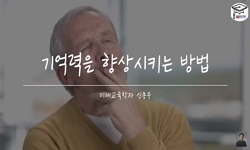(Background & Purpose) The rapid growth of consciousness of modern people, following the acceleration of changes in modern society, has brought the development of cultural life for enjoyment and changes in exhibition culture and viewing behavior for e...
http://chineseinput.net/에서 pinyin(병음)방식으로 중국어를 변환할 수 있습니다.
변환된 중국어를 복사하여 사용하시면 됩니다.
- 中文 을 입력하시려면 zhongwen을 입력하시고 space를누르시면됩니다.
- 北京 을 입력하시려면 beijing을 입력하시고 space를 누르시면 됩니다.
부가정보
다국어 초록 (Multilingual Abstract)
(Background & Purpose) The rapid growth of consciousness of modern people, following the acceleration of changes in modern society, has brought the development of cultural life for enjoyment and changes in exhibition culture and viewing behavior for educational desire satisfaction. The viewers and audience in the past received the uniform information interpreted in a one-way viewpoint, yet the viewers and audiences in the modern time want to obtain information through two-way communications. Thus, museums now require having changes in the new form for the viewers to experience contents by themselves and gain information in their memories through spatial experience, not one-way information delivery. Experiencing an exhibit space means to add significance in contents, symbolize them in the visual form in the space, and organize them for the viewers to re-recognize and this is the narrative organization. The narrative organization designates a story, becomes a narrative message, and the viewers recognize the story of the exhibits through storytelling. Therefore, museums need to present the exhibition by using the narrative storytelling organization system. However, since the storytelling of the museums have not had the framework yet, so this research aims to lay the foundation for the exhibition presentation development through this advanced research on the storytelling organization system in the similar narrative Environment. (Method) The plays that applied the narrative storytelling through the active two-way communication with audience were selected as examples among cultural contents realized in the space, the narrative storytelling characteristics were analyzed, and the storytelling organization system was examined. (Results) The analyses of the three selected plays revealed that a variety of presentations, which can mean the application of predicates besides the narrative of the subject (main character), are required when realizing the subjects and predicates of lines in the plays. The predicative storytelling appeared in the three plays characterizes as follows: ①space-time specific according to stage presentation change, such as lighting and music, ②multi-sensory that expresses more than two senses with the movement and facial expression of characters and objects, and ③interactivity that leads actively the participation of audience with narrating and stage entering of audience. (Conclusion) Museums now must change to a new form centered on the demand that presents various experiences and memories as a space. Thus, the predicative storytelling based on narrative seemed to be a necessary element and will need constant researches in the future.
동일학술지(권/호) 다른 논문
-
대규모 도시공원의 건전한 물순환 체계 구축에 관한 연구 -용산공원 설계 국제공모를 중심으로-
- 한국공간디자인학회
- 김승현 ( Seung Hyun Kim )
- 2016
- KCI등재
-
소우 후지모토 건축에서 나타나는 자기조직화 특성에 관한 연구
- 한국공간디자인학회
- 한태권 ( Tae Kwon Han )
- 2016
- KCI등재
-
- 한국공간디자인학회
- 장하천 ( Hequan Zhang )
- 2016
- KCI등재
-
- 한국공간디자인학회
- 하숙녕 ( Sooknyung Ha )
- 2016
- KCI등재






 KCI
KCI KISS
KISS




